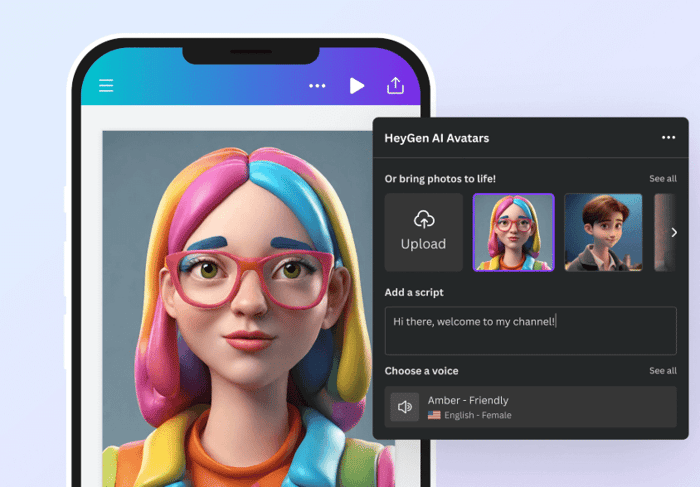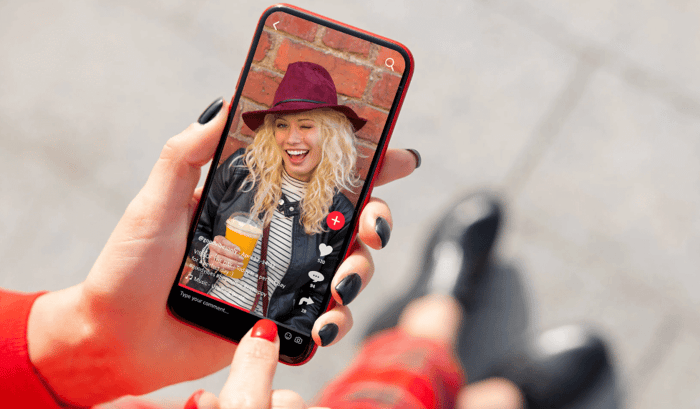Text to Video AI: Revolutionizing Content Creation with Automated Video Generation
Table of Contents
In the world of digital content, speed, personalization, and visual impact are essential for brands, educators, influencers, and marketers alike. As audiences increasingly prefer video over other types of media, content creators face the challenge of producing high-quality, engaging videos faster than ever before. This is where text to video AI is making a significant impact, offering a powerful solution to bridge the gap between written ideas and visual storytelling.
Text to video AI refers to technology that automatically converts written content into fully produced video segments.
By analyzing a script or text input, these tools select visuals, voiceovers, transitions, and even background music to generate complete videos. The process, which traditionally required entire teams of videographers, editors, and designers, can now be streamlined into a few clicks, dramatically accelerating the content production workflow.
What Is Text to Video AI and How Does It Work?
At its core, text to video AI is a system powered by machine learning and natural language processing. These tools are trained to understand context, extract meaning, and map key phrases to relevant visual elements. Once a user inputs a script or text, the AI scans for cues such as scene changes, emotions, and topics. It then matches those cues with a database of video clips, images, animations, or digital assets, placing them in sequence to produce a coherent narrative.

Many platforms also offer synthetic voice narration or allow the import of custom audio. The final product is a video that feels crafted and intentional, even though the heavy lifting is done by the AI. Users often have the option to fine-tune the result, selecting different visuals, adjusting timing, or adding subtitles. This flexibility makes the technology suitable for everything from social media marketing to educational explainer videos.
The Rise of AI in Visual Content Creation
The growing use of text-to-video AI aligns with automation trends in the creative industries. In an attention economy where time is everything, the ability to turn a blog post, newsletter, or marketing copy into a professional-looking video in a matter of minutes is a game-changer.
More and more content creators are turning to video-first strategies, especially on platforms like Instagram Reels, TikTok, YouTube Shorts, and LinkedIn. AI makes it possible to repurpose long-form content into short video pieces, expand reach across multiple channels, and maintain a consistent visual presence, all without the need for a traditional video production team. This democratization of video content allows individuals and small teams to compete with larger media producers. It lowers the barrier to entry, enabling more voices to share ideas, products, and stories through a highly consumable format.
Moreover, businesses now have the ability to run real-time campaigns that would have been impossible to manage before. For example, imagine a fashion retailer launching daily outfit inspiration videos based on current weather forecasts, or a media outlet summarizing the latest news headlines in video form minutes after they break: text to video AI makes this level of agility a reality.

The use of AI in content creation is also fostering innovation in user engagement. Personalized videos, created from user data or previous interactions, offer a new way to connect with audiences. Instead of generic messaging, companies can deliver relevant, timely, and visually appealing content at scale. This has proven especially useful in customer service, onboarding processes, and targeted promotions.
Key Benefits of Text to Video AI
One of the main advantages of text to video AI is its efficiency. It cuts production time drastically, often generating videos in minutes instead of days or weeks. This is especially valuable for industries that rely on frequent updates, such as news media, e-commerce, and digital learning.
Additionally, text to video AI offers scalability, as brands can produce hundreds of videos that align with their voice and aesthetic without sacrificing quality. Templates, brand assets, and tone adjustments make it easy to maintain a consistent visual identity across all campaigns.
Other key benefits include:
Multilingual Support: Many tools support translation and voiceover in different languages, enabling global reach.
Cost Reduction: Reduces the need for hiring video editors, animators, and voice artists.
A/B Testing: Facilitates rapid creation of video variations for testing audience responses.
Accessibility: Makes video content more accessible for people with limited creative or technical backgrounds.
Another major benefit lies in the format flexibility. Text to video AI tools often generate videos in different aspect ratios suited for mobile, desktop, and social platforms. This is particularly important as mobile video consumption continues to rise. Creators can automatically generate versions of their content tailored for vertical, square, or wide formats, maximizing visibility across platforms like Instagram Stories, YouTube, or TikTok.
The technology is also helping to break linguistic and cultural barriers. With automatic language translation and localization features, creators can quickly adapt their videos for different regions. This opens new opportunities for brands looking to expand into international markets without investing heavily in new creative teams.

Use Cases Across Industries
Text to video AI is not limited to one type of content. It serves multiple industries with various use cases:
Marketing and Advertising: Turn ad copy into engaging video ads tailored for platforms like Facebook or Google.
E-Learning and Training: Convert educational text or course material into dynamic instructional videos.
News and Journalism: Produce quick updates, headlines, or explainers from written news reports.
Product Demos and Tutorials: Transform product descriptions or FAQs into visual guides.
Corporate Communication: Enhance internal newsletters or CEO messages with visual storytelling.
Social Media and Influencer Content: Repurpose blog posts or long captions into short, attention-grabbing video content.
The versatility of this technology is what makes it so valuable because it adapts to the needs of various content strategies, all while saving time and improving viewer engagement. The application in the entertainment and gaming industries is also growing, developers can use text to video AI to promote new releases with teaser videos or game summaries created from existing scripts or documentation. Music artists and labels are experimenting with lyric videos, mood-based visuals, and album teasers, all created automatically from their promotional content.
Government agencies and non-profits are leveraging these tools to share public service announcements, community updates, and fundraising campaigns. The ability to quickly translate vital information into video format ensures that messages are delivered clearly and effectively, particularly to audiences with varying literacy levels or language barriers.
In all these sectors, the integration of AI video creation is not replacing human creativity, in fact it is enhancing it. By automating the more technical and repetitive aspects of production, creators are free to focus on strategy, innovation, and storytelling, where human input is irreplaceable.
In the next few years, we can expect a further convergence between text to video AI and emerging technologies like virtual reality, voice AI, and interactive storytelling. This evolution will offer even deeper engagement and realism, making video not just a passive experience but a dynamic, two-way conversation between brands and their audiences.
Modelia: creating the best AI videos.
An innovative example of how video AI is being applied in the fashion and digital design space is Modelia, a platform that empowers brands to generate high-quality video content using just a single image of a garment. By combining visual rendering with automated video generation, Modelia allows designers to showcase their collections in motion without needing traditional photography or filming sessions. The platform transforms static visuals into dynamic content, complete with smooth transitions, lifelike textures, and styling variations—ideal for marketing, e-commerce, or social media campaigns.

This capability is especially valuable for emerging fashion labels and independent designers who need to create compelling visuals quickly and affordably. With Modelia’s technology, a product image can be repurposed into a professional video within minutes, streamlining production and elevating brand presence across digital platforms. As text to video AI continues to grow across industries, tools like Modelia prove how visual storytelling can be redefined through smart automation, giving creators more freedom and flexibility in how they present their work.
Embracing the Power of Automated Video Creation
The demand for video is only going to grow. As competition for attention intensifies, creators need tools that help them stay visible, relevant, and impactful. Text to video AI provides that edge. It simplifies production, amplifies reach, and enhances the ability to communicate visually in a crowded digital landscape.
While no AI can fully replace human creativity, it can empower it. By handling the technical complexity, these tools free creators to focus on strategy, storytelling, and connection. Whether you are an educator, marketer, entrepreneur, or influencer, adopting text to video AI can take your content to the next level, one frame at a time.
As we move deeper into the age of intelligent content creation, those who embrace the possibilities of text to video AI will be best positioned to lead the next wave of digital storytelling.
Try now Modelia and start exploring AI image and video technology
How would you rate this article:
Related Articles
- How artificial intelligence is transforming the fashion industry
- Fashion Design with AI: All You Need to Know
- How to Flip an Image in Seconds
- 5 AI Fashion Design Tools for Modern Fashion Designers
- 25 AI Product Images Tools to Improve your Online Sales in 2025
- Best 5 Hautech.ai Alternatives to Explore in 2025
- 8 Best AI Video Editing Tools Transforming the Future of Video Production
- Best 7 Botika Alternatives You Should Check Out in 2025
- How to Try On Wedding Dresses Virtually
- 10 AI Tools for Image Enhancement: Boost Your Photos and Product Images


